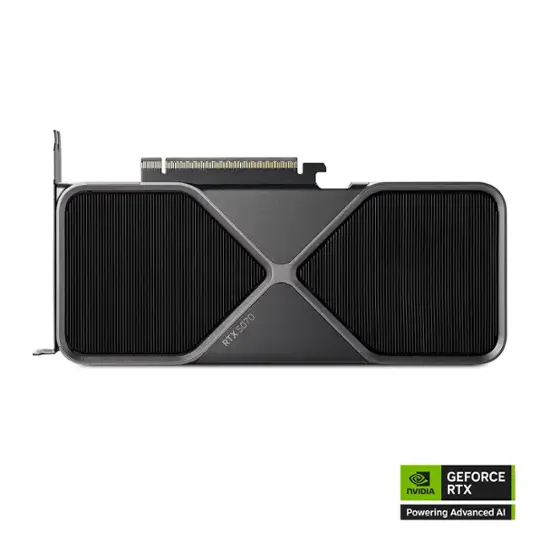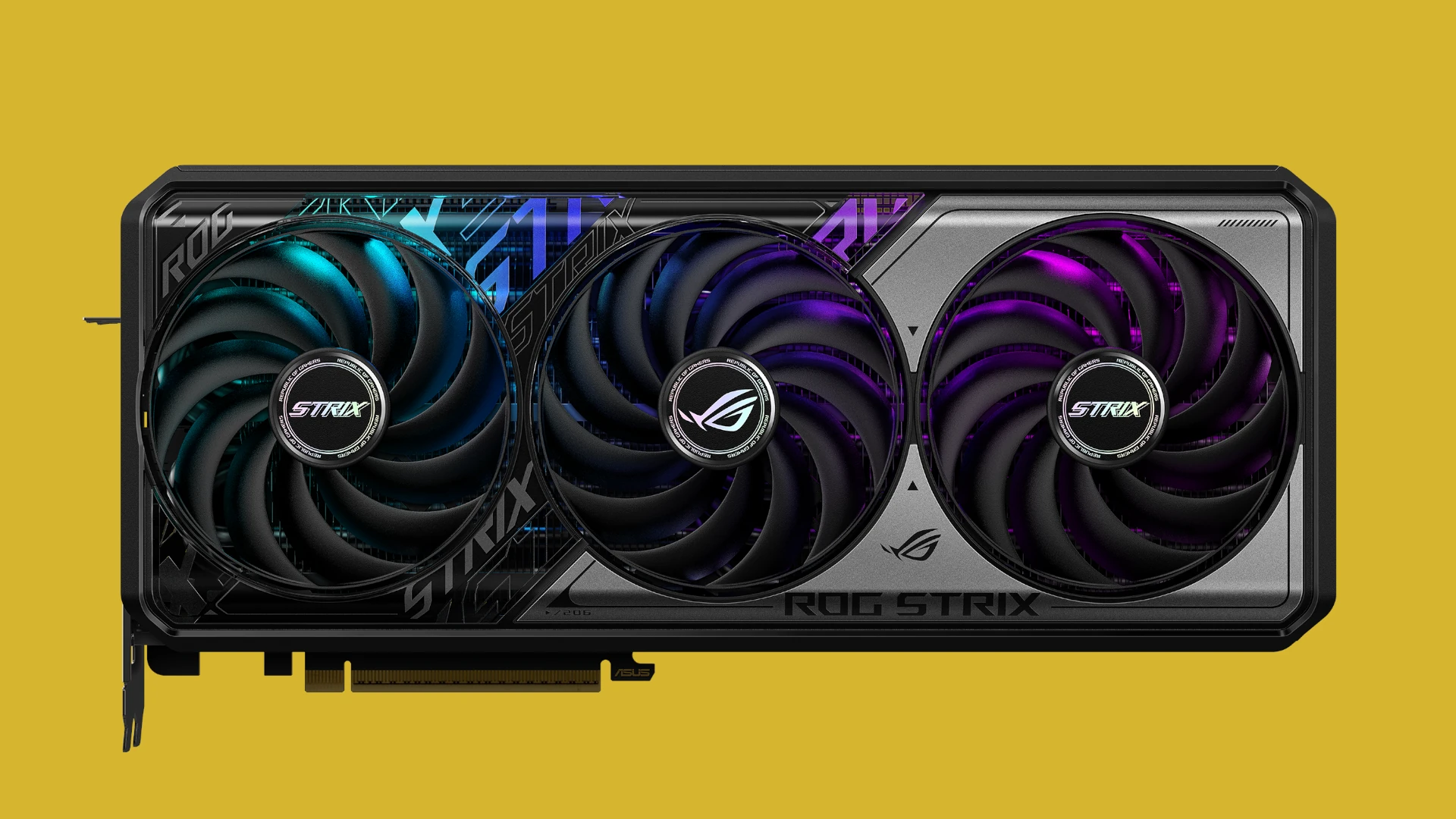NVIDIA is rumored to release its RTX 50 Super Series graphics cards with much larger amounts of VRAM than before, thanks to new 3GB GDDR7 memory modules. The main rumor is that these upgrades will give cards like the RTX 5080 and 5070 Super a big boost in memory sizes, which could help in gaming and other demanding tasks. This change could be important for users who need more VRAM for newer games, AI, and content creation.
The update has sparked a lot of interest in the tech community, with many watching to see how these memory increases will shape the market. While the performance leap is not expected to be huge in other areas, the extra VRAM stands out as the biggest feature of the upcoming cards.
What the RTX 50 Super Leak Reveals

According to credible insider reports, NVIDIA is preparing to unleash “Super” refreshes for its RTX 50 series, aimed squarely at addressing early criticisms of VRAM limitations on its next-gen GPUs. The two cards reportedly in the pipeline—the RTX 5080 Super and RTX 5070 Super—are rumored to feature 24GB and 18GB of GDDR7 VRAM respectively. That’s a significant bump over the current models, and it could be a game-changer for both gamers and creators dealing with high-resolution assets or AI workloads.
These upgraded memory configurations are made possible by NVIDIA’s shift to 3GB GDDR7 modules. Unlike the more traditional 2GB layout used in previous generations, these new modules allow for much more flexible and high-capacity arrangements without dramatically altering the physical design of the board. It also allows NVIDIA to keep die sizes and thermal designs in check while delivering noticeably improved performance in memory-intensive tasks.
Why This Matters for Gamers and Creators
The current generation of GPUs has already been criticized for falling short on VRAM, especially in 1440p and 4K gaming where modern titles like Alan Wake 2, Cyberpunk 2077 (with ray tracing enabled), and Hogwarts Legacy demand large memory buffers. With the move to 24GB on the RTX 5080 Super and 18GB on the 5070 Super, NVIDIA seems to be preemptively countering that concern.
For content creators, the additional VRAM could mean smoother workflows in apps like Blender, DaVinci Resolve, and Adobe Premiere Pro. High-resolution textures, complex 3D models, and AI-powered rendering tasks are all VRAM-hungry. If these specs hold true, NVIDIA is positioning the 50 Super lineup as a more futureproof solution in both gaming and professional contexts.

Release Window and Strategy
While NVIDIA hasn’t officially confirmed these SKUs, the launch timing is rumored to fall between late 2025 and early 2026. The decision to go with a mid-cycle “Super” refresh aligns with the company’s historic strategy—offering higher-performing variants with better value than the original releases. Think of the RTX 20 Super and RTX 30 Super generations, which helped extend product cycles while giving enthusiasts something to upgrade to without waiting for the next full-numbered generation.
There’s also speculation that the refresh is a response to upcoming competition from AMD’s RDNA 4 series, which is also expected to bring better efficiency and competitive pricing. By boosting VRAM, NVIDIA can preemptively close one of the few remaining gaps that rivals often use as a marketing edge.
Potential Specs and Performance Expectations
Here’s a breakdown of what the rumored specs suggest for each card:
| GPU | VRAM (Rumored) | Memory Type | Performance Tier | Target Audience |
|---|---|---|---|---|
| RTX 5080 Super | 24GB GDDR7 | GDDR7 | Enthusiast / High-End | 4K Gaming, AI, Workstations |
| RTX 5070 Super | 18GB GDDR7 | GDDR7 | Upper Mid-Range | 1440p/4K Gaming, Content Creation |
While no core counts or clock speeds have leaked yet, the VRAM boost alone implies a notable uplift in memory bandwidth and stability in high-load scenarios. If NVIDIA maintains the Ada Lovelace successor architecture—or moves to a refined version—the Super cards could also benefit from architectural efficiency gains.
What It Means for the Rest of the RTX 50 Line
If the Super models hit the market with more aggressive pricing or bundle features like DLSS 4 and next-gen RT cores, they could make the standard RTX 5080 and 5070 look less appealing overnight. This often results in a price reshuffle across the entire stack, giving late adopters a better entry point for high-end hardware.
It also raises the question of whether a 5090 Super is in the works. With 24GB on the 5080 Super, a theoretical 5090 Super might jump to 32GB or introduce HBM-style memory for workstation crossover appeal. At this point, all eyes are on NVIDIA’s next move.
Key Takeaways
- NVIDIA may add a big VRAM boost to the RTX 50 Super Series
- The cards could use 3GB GDDR7 modules for higher memory
- These changes target gamers and pros who need more memory
Rumored NVIDIA RTX 50 Super Series VRAM Upgrades
With rumors heating up and industry insiders increasingly confident, it’s looking more likely that NVIDIA will indeed deliver Super variants of its RTX 50-series cards with major VRAM upgrades. Whether you’re a gamer pushing ultra settings at 4K or a creator tackling GPU-intensive workloads, the 5080 Super and 5070 Super could become the sweet spot between performance, memory capacity, and price—right when the market needs it.
NVIDIA may soon boost VRAM capacities across several RTX 50 Super graphics cards based on multiple leaks. These changes would bring new memory technology, higher performance, and expanded options for users targeting gaming or AI workloads.
VRAM Capacity and GDDR7 Memory Enhancements
The RTX 50 Super series is reportedly moving to GDDR7 memory modules. Compared to GDDR6X, GDDR7 offers much more bandwidth, improving how fast the graphics card can move data. This results in smoother rendering, especially at higher resolutions or when using ray tracing.
VRAM capacity is expected to rise significantly. Rumors suggest that the GeForce RTX 5080 Super could ship with up to 24 GB of VRAM, which represents a major leap over previous models. The RTX 5070 Super may get 18 GB, making it suitable for creators, gamers, and AI-focused users who need more memory for larger workloads.
NVIDIA’s use of 3 GB GDDR7 modules is a key factor here, allowing the company to configure memory sizes that fit specific needs. More VRAM lets users run new games at ultra settings and helps with heavy AI tasks.
Expected Graphics Card Lineup and Blackwell Architecture
The rumored lineup includes several models in the new NVIDIA GeForce RTX 50-series:
- RTX 5090
- RTX 5080 Super
- RTX 5080
- RTX 5070 Super
- RTX 5070 Ti
All models are likely to be built on the next-generation Blackwell architecture, which should enhance power efficiency and deliver better raw performance. The Blackwell design may allow for more CUDA cores and increased clock speeds, which combined with upgraded VRAM, boost graphical and computing performance.
This architecture also enables wider memory buses—such as a possible 512-bit bus for top-tier cards—further increasing memory bandwidth. Higher bandwidth will benefit demanding games and creative software, especially those using ray tracing or DLSS 4.
Leaked Specs and New Technologies
Leaked specifications show NVIDIA aiming for meaningful improvements instead of minor updates. Rumors point to the GB202 GPU inside the RTX 5090, with about 21,760 CUDA cores. This expansion means faster processing for games and professional applications.
Support for GDDR7 memory stands out as a major feature. Combined with Blackwell’s architecture, these cards could handle next-generation AI, 3D rendering, and video editing without lag.
NVIDIA may also introduce upgraded features like DLSS 4 and more advanced ray tracing. Machine learning enhancements might appear on these cards, making them useful for both real-time graphics and productivity scenarios. Many users will watch for these cards to check if leaked specs match actual launch details.
Market Impact and Industry Context
NVIDIA’s upcoming RTX 50 Super Series is attracting attention for its rumored high VRAM capacities and potential performance increases. These changes could affect how gamers and professionals choose graphics cards, and also shape pricing and competition in the market.
Anticipated Performance for Gaming at 4K and 1440p
Leaked details suggest RTX 50 Super cards may use 3GB GDDR7 memory modules, leading to increased VRAM. This move targets better stability and performance for games running at 4K and 1440p, where high memory helps manage large textures and ray tracing effects. While RTX 4080 and RTX 4070 cards handle many modern games well, some demanding titles already push their VRAM limits.
With higher capacities, the new GPUs could reduce stuttering in open-world games and support smoother gameplay at maximum settings. Competitive gamers who value high frame rates, especially at 1440p, may see benefits. The potential improvements also appeal to content creators using AI or video editing software, further justifying the extra memory.
Pricing, Tariffs, and Competition With AMD
The RTX 50 Super Series could face strong competition from AMD’s expected RDNA 4 GPUs. Historically, NVIDIA cards—like the RTX 4080—cost more than similar alternatives from AMD. Pricing for the new Super models is under close watch, especially with current tariffs adding extra costs to imported consumer electronics in some regions.
A table below compares expected factors:
| GPU Model | Expected VRAM | Potential Price Impact | Competing AMD Card |
|---|---|---|---|
| RTX 5080 Super | Up to 24 GB | Higher, due to tariffs | RDNA 4 Flagship |
| RTX 5070 Super | 12-16 GB | Mid-High, uncertain | RDNA 4 Midrange |
Buyers weigh VRAM increases against asking prices. If AMD undercuts NVIDIA again, price wars may follow, especially as tariffs raise the total cost for gaming laptops and desktop GPUs.
Event Launches and Community Reactions
NVIDIA often announces major products at events like CES and Computex. CES 2025 could be a likely venue for Jensen Huang to reveal the RTX 50 Super Series. Community forums and social media have already begun discussing leaked VRAM numbers, with many gamers arguing about the value of more memory versus overall chip speed.
On sites like Reddit and outlets such as VideoCardz, reactions are mixed. Some praise the bigger VRAM pools, hoping they push game developers to optimize for modern GPUs. Others remain skeptical, worried that prices will rise too high compared with current options. How well these cards are received may depend on launch pricing and independent gaming benchmarks.
Frequently Asked Questions
NVIDIA’s rumored RTX 50 Super Series may deliver noticeable memory increases and better performance than older models. Early leaks suggest that users could see new price points and potential compatibility factors to consider.
What improvements can be expected in the memory specifications for the RTX 50 Super Series?
The RTX 50 Super Series is expected to offer more VRAM than previous generations. Reports point to the use of 3GB GDDR7 memory modules, which could mean higher total memory on each graphics card. There is talk of VRAM capacities stretching well beyond what the RTX 40 Series offered.
How does the RTX 50 Super Series compare to its predecessors in terms of performance?
Performance is expected to improve, but the full details are not yet confirmed. Early leaks suggest that even a standard RTX 5070 Super might deliver power similar to the older 4070 Ti. Advances in efficiency and memory technology may offer smoother gameplay and better multitasking.
What is the anticipated release date for the NVIDIA RTX 50 Super Series?
Multiple sources indicate that NVIDIA plans to launch most of the RTX 50 Series in the first quarter of 2025. Some models may arrive earlier or later, but early 2025 is the timeframe most leaks mention.
Are there any known compatibility issues with existing hardware for the upcoming RTX 50 Super Series?
No major compatibility problems are known at this time. Most modern motherboards with PCIe slots should work with these new cards. Some features or power supplies may require upgrades to get the best performance.
What price range can consumers expect for the new RTX 50 Super Series graphics cards?
Specific pricing has not been stated yet. Given the history of the Super line and early leaks, prices will likely fall in line with previous Super models, adjusted for the increased VRAM and performance. There may be some increases compared to the RTX 40 Series, especially for higher-end models.
Has NVIDIA made any official announcements regarding the RTX 50 Super Series?
As of now, NVIDIA has not released official statements detailing the RTX 50 Super Series. All current information comes from leaks and rumors. No formal launch date or full specification sheet has been published by the company.







